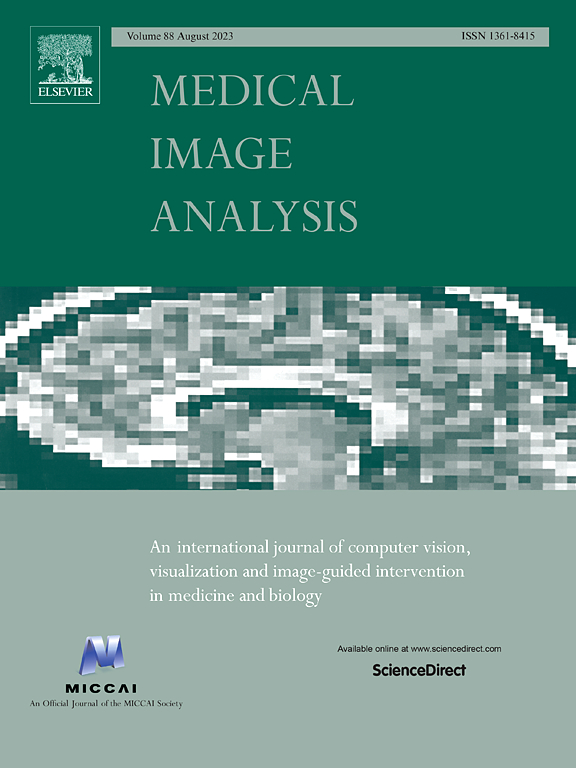Illuminating the unseen: Advancing MRI domain generalization through causality
IF 10.7
1区 医学
Q1 COMPUTER SCIENCE, ARTIFICIAL INTELLIGENCE
引用次数: 0
Abstract
Deep learning methods have shown promise in accelerated MRI reconstruction but face significant challenges under domain shifts between training and testing datasets, such as changes in image contrasts, anatomical regions, and acquisition strategies. To address these challenges, we present the first domain generalization framework specifically designed for accelerated MRI reconstruction to robustness across unseen domains. The framework employs progressive strategies to enforce domain invariance, starting with image-level fidelity consistency to ensure robust reconstruction quality across domains, and feature alignment to capture domain-invariant representations. Advancing beyond these foundations, we propose a novel approach enforcing mechanism-level invariance, termed GenCA-MRI, which aligns intrinsic causal relationships within MRI data. We further develop a computational strategy that significantly reduces the complexity of causal alignment, ensuring its feasibility for real-world applications. Extensive experiments validate the framework’s effectiveness, demonstrating both numerical and visual improvements over the baseline algorithm. GenCA-MRI presents the overall best performance, achieving a PSNR improvement up to 2.15 dB on fastMRI and 1.24 dB on IXI dataset at 8 acceleration, with superior performance in preserving anatomical details and mitigating domain-shift problem.
求助全文
约1分钟内获得全文
求助全文
来源期刊

Medical image analysis
工程技术-工程:生物医学
CiteScore
22.10
自引率
6.40%
发文量
309
审稿时长
6.6 months
期刊介绍:
Medical Image Analysis serves as a platform for sharing new research findings in the realm of medical and biological image analysis, with a focus on applications of computer vision, virtual reality, and robotics to biomedical imaging challenges. The journal prioritizes the publication of high-quality, original papers contributing to the fundamental science of processing, analyzing, and utilizing medical and biological images. It welcomes approaches utilizing biomedical image datasets across all spatial scales, from molecular/cellular imaging to tissue/organ imaging.
 求助内容:
求助内容: 应助结果提醒方式:
应助结果提醒方式:


